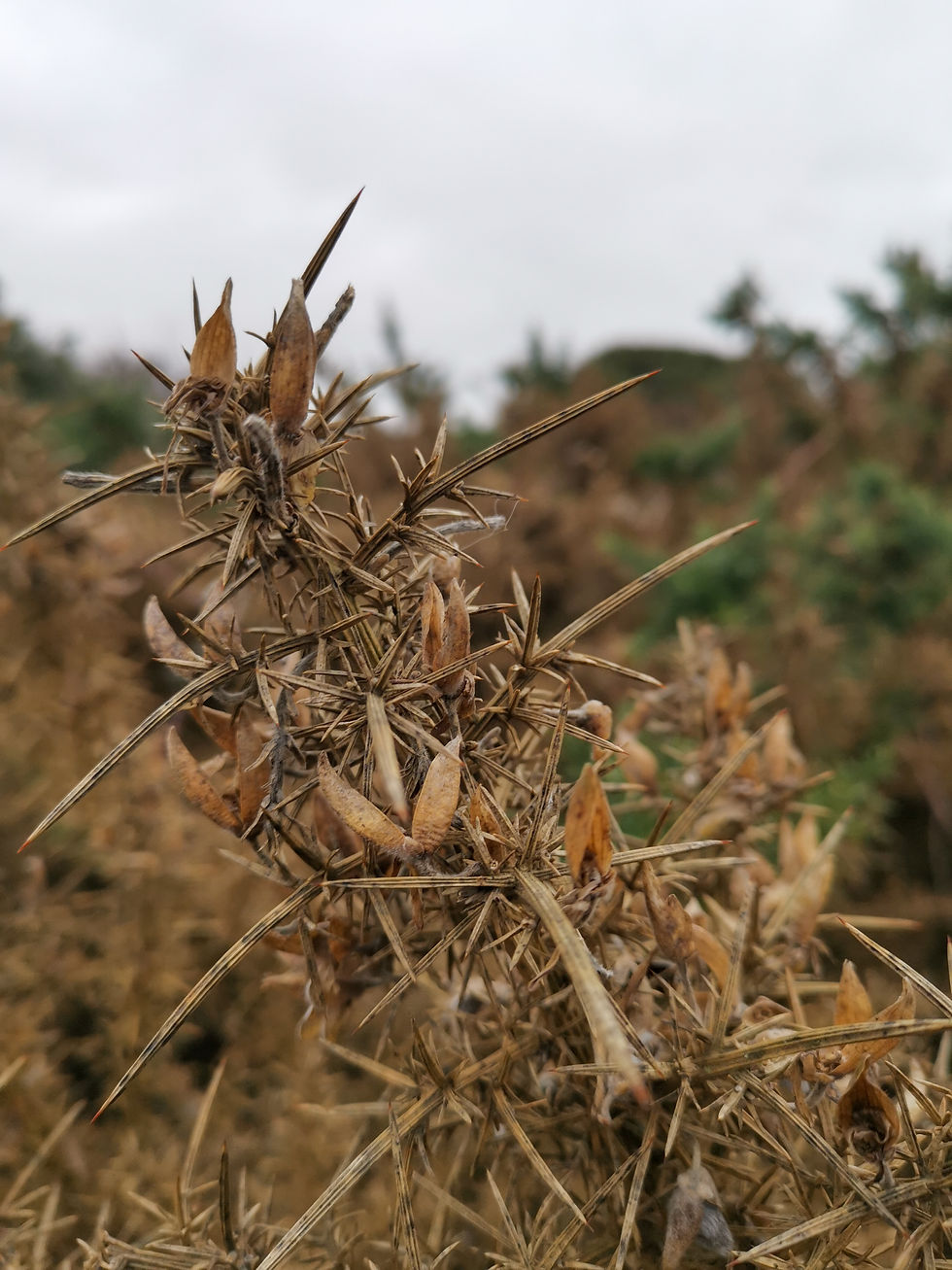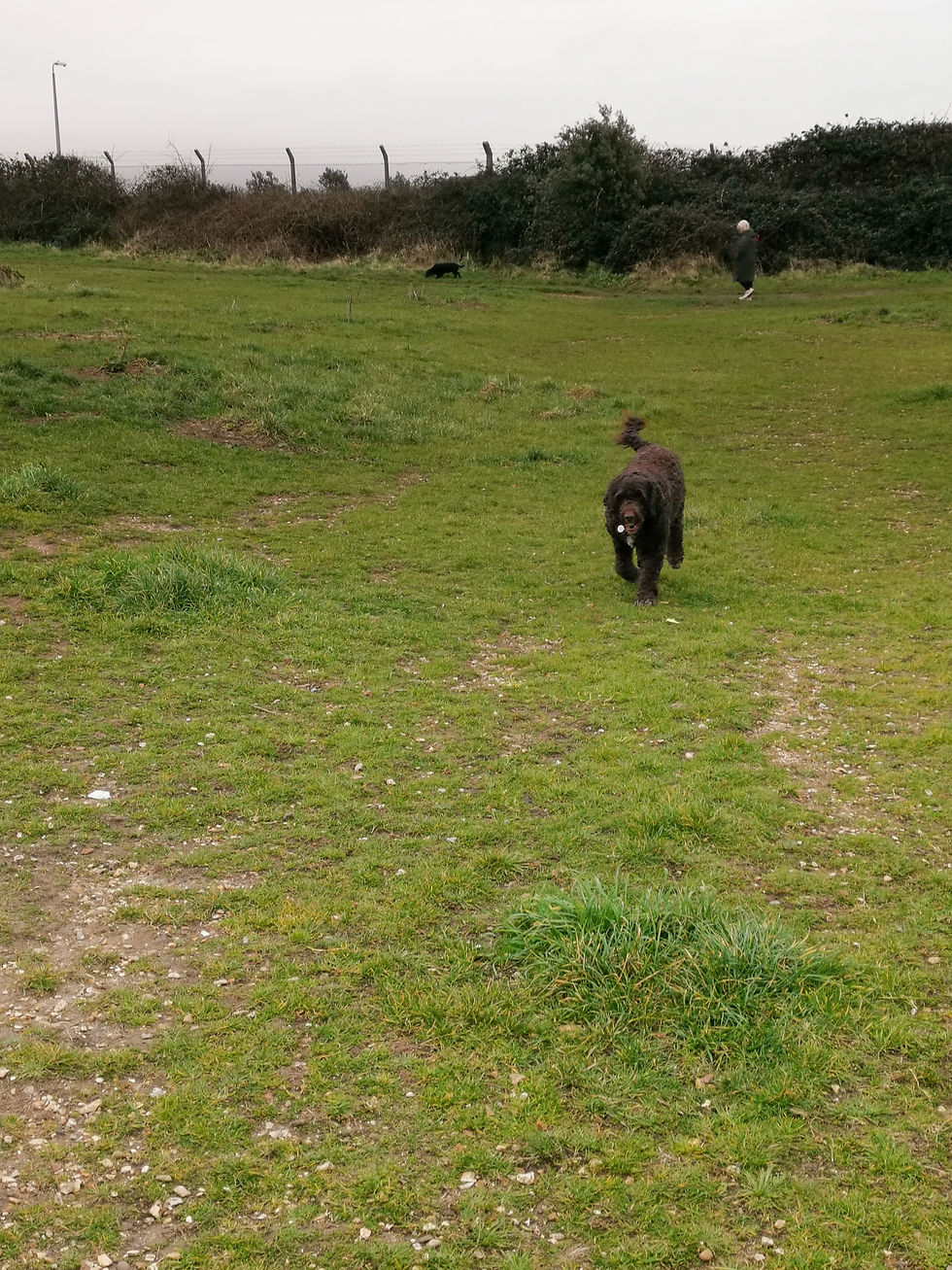[INT]
Our site is very interesting with many types of activities, areas and history. I am gonna look at the Plants and Birds in the area. Dividing it into four separate parts.
The residential area and the Lock lake.
Fort Cumberland open space
The alleyway and Fraser Range
Eastney beach
1. The residential area and the Lock lake.

In the residential area itself, there were only a few bushes and trees, I took a picture of this interesting spiky one that is just starting to develop new buds.

In the lock lake that consists of mud, I found small sea snails (I am not sure about the correct name for them) as well as seaweed. Seaweed is a very good plant, you can both eat it and it captures CO2.
2. Fort Cumberland's open space

Fort Cumberland's open space started as a rifle range for the military but in 1978 Portsmouth City Council bought the area. "It has now been designated a Site of Interest for Nature Conservation (SINC) because of its importance to the abundance of wildlife here." (Portsmouth City Council, 2020)
"You might see:
plants – over one hundred species of plant have been recorded on the heathland site, including Autumn Lady’s Tresses Orchid, Viper’s Bugloss and Oxeye Daisy.
reptiles – Common lizards and slow worms can be seen on warm sunny days in summer
birds – Nationally rare birds such as the Dartford Warbler and Stonechat."
(Portsmouth City Council, 2020)
This pdf lists all the different species in the area.
This pdf is more visual which I enjoy so I can connect the names to the species. There is everything from butterflies to reptiles and crickets.
On our walk we saw many birds flying over the area, I was told that they are starlings and when they move they create beautiful patterns which are called murmurations.

Let us not forget all of the dogs that come to visit with their owners. We saw so many dogs on our walk here.
1. The alleyway and Fraser Range


The path that connects all of our areas. Here are some trees and bushes, the bushes have thorns on them and I thought that suited the highly secured area with barbed wire. It emphasises the feeling of "stay out of here".
Along the path, we met some more dogs.
4. Eastney beach

The easy beach area has many nationally rare species and is also a Site of Importance for Nature Conservation (SINC).
"Among the typical species of plant normally found in coastal regions, there are many national rarities such as Nottingham Catchfly, Sea Holly, Sea Kale, Yellow Horned Poppy, Sea Bindweed and Sea Radish.
The beach and the adjoining Eastney Lake are also valuable roosting and feeding sites for bird life. Regular visitors are gulls, terns and waders such as Dunlin, Sanderling and Ringed Plover." (Portsmouth City Council, 2022)
This pdf lists all the different species in the area.
This pdf is more visual, we see mostly plants and then there are butterflies and bees.
This is a list from their webpage with all the flora and fauna.
References:
Portsmouth City Council. (2020, December 1). Fort Cumberland open space. https://www.portsmouth.gov.uk/services/leisure/parks/fort-cumberland-open-space/
Portsmouth City Council. (2022, January 13). Eastney beach flora and fauna. https://www.portsmouth.gov.uk/services/leisure/wildlife-and-conservation/eastney-beach-flora-and-fauna/
very clear and beautifully 'imaged' piece ... look up 'Goethean observation' and start drawing those plants and animals ... (eg https://www.natureinstitute.org/article/craig-holdrege/a-fresh-take-on-the-goethean-approach; https://medium.com/age-of-awareness/zarte-empirie-goethean-science-as-a-way-of-knowing-e1ab7ad63f46;